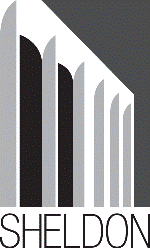Fine and Performing Arts, Hixson-Lied College of

Sheldon Museum of Art: Catalogs and Publications
Date of this Version
1974
Citation
Sheldon Memorial Art Gallery, Lincoln, Nebraska in collaboration with the Nebraska Art Association, Lincoln, the Staff, Board of Trustees and the Women's Board of the Mulvane Art Center, Topeka, and the Mid-America Arts Alliance, 1974, (110 Pages)
Abstract
The present exhibition has been organized to focus attention on one of the most flourishing aspects of contemporary American painting, the revival of representational art in the traditional formats of the landscape, the figure and the still life. For the past ten years it has become evident that more and more artists are having second thoughts about the abstract style which had come to dominate the artistic scene within the several previous decades. There are instances of renunciation, a sudden yet deliberate turning away from abstraction toward some form of traditional representation. There are also numerous instances of artists beginning their professional efforts with a very conscious demonstration of allegiance to the figurative tradition against which their predecessors rebelled. Today, one of the principal problems in the organization of this exhibition is to accommodate the breadth and variety of this new involvement with realism.
Several considerations were operative in the final selection. First of all, it is of considerable interest to note that, far from being a mere "revival" of past concerns, the contemporary realist has a very different eye, an eye that has been profoundly affected by the abstract experience of half a century; but an eye that views today's experience with insights that are peculiarly representative of today. To underline this difference and, at the same time, to demonstrate the fact that today's realism is indeed no revival but part of a continuity, we have attempted to suggest something of the history of the realist point of view since the turn of the century. There is ample evidence in the work of some of the younger painters that they are seeing for the first time the work of such American realists as Thomas Eakins and Edward Hopper, to say nothing of such European realists as Ingres and Courbet.
Other considerations, each of them affecting the final selection, have to do with the varying definition of realism, reality and the real. This is a semantic jungle, the density of which scarcely permits an exhaustive demonstration in an exhibition of fifty paintings, but one qualification is necessary to answer those who will look at the exhibition with artists in mind who are not included, all of whom are intrinsically realists: Ivan Albright, Paul Cadmus, Alice Neel, Fairfield Porter, and, among the younger generation, Jack Beal, Alfred Leslie, Neil Welliver, to name only a few.
Theirs is a realistic point of view but their method as painters is dominated by an attitudinal bias in some and, in others, by a painterly emphasis on light, color or texture which precludes dispassionate observation. For this occasion we have limited the operative definition of realism to an objective and precise observation of experience.
The title of the exhibition has been chosen to contain as succinctly as possible the essence of the idea represented in the paintings. It suggests that one of the simplest and most direct approaches to reality is through a fundamental acceptance of the evidence provided in the act of seeing. To see simply and fully, without undue emotion or reflection requires an exercise of intelligence that puts a considerable demand on the artist who chooses to record this experience as well as on the viewer who looks at the finished work. Such an experience of seeing is more ideal than commonplace, and in the exhibition it is demonstrated in fifty varying forms.


Comments
Copyright 1974 Sheldon Memorial Art Gallery